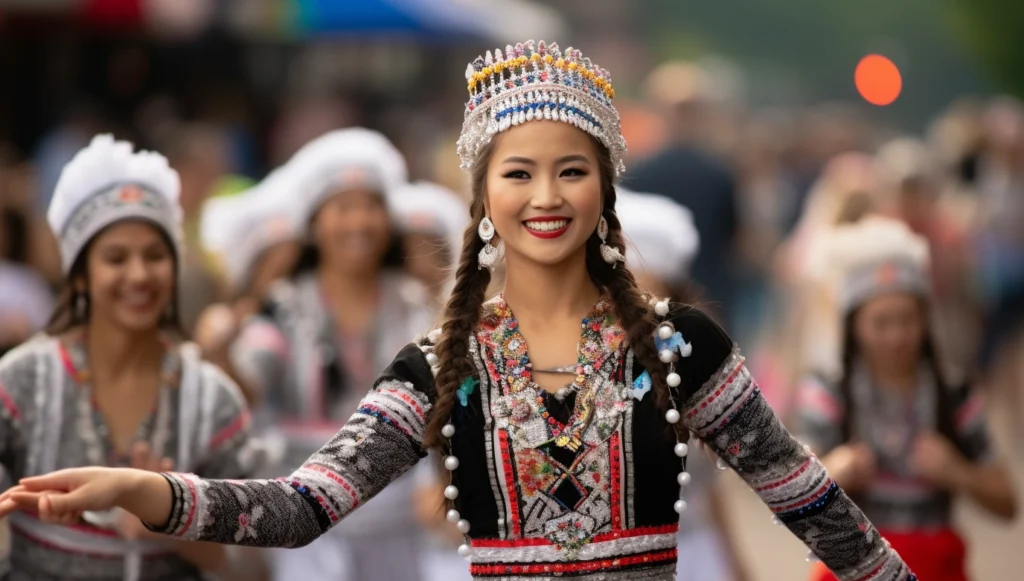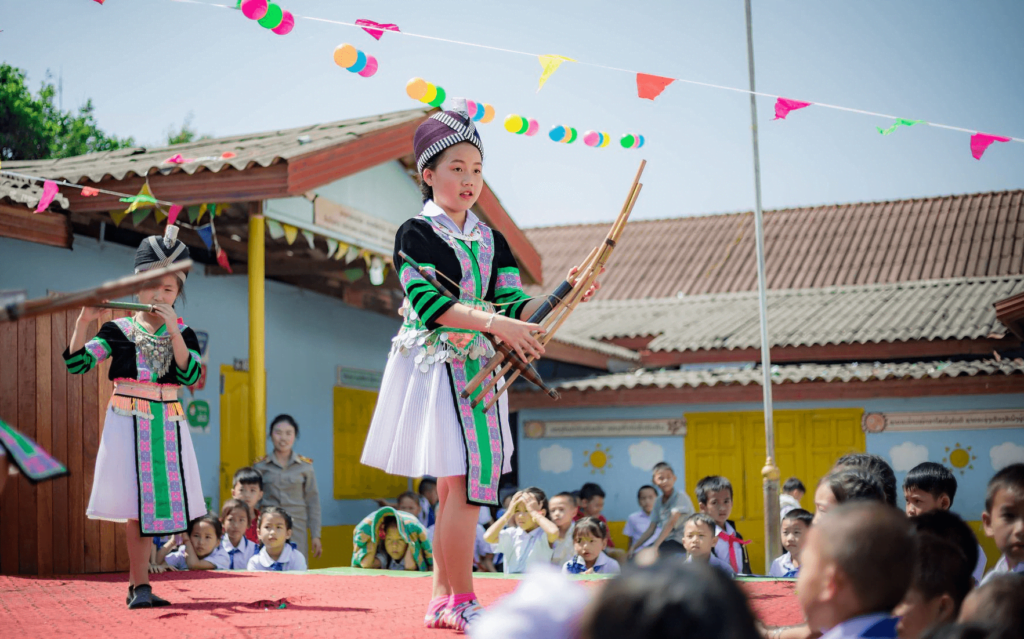
From Laos to Minnesota: The Resilient Journey of the Hmong Community
In the annals of time, Minnesota has witnessed a linguistic transformation, echoing the evolving rhythms of its immigrant communities. Once punctuated by the cadences of German and Norwegian tongues, the state now resonates with the melodious strains of Spanish and the intricate dialect of Hmong, as evidenced by the discerning records of the U.S. Census Bureau.
Hmong in Minnesota: A Cultural Ascendancy
The present-day soundscape artfully showcases the ascendancy of Hmong culture within the tapestry of contemporary Minnesota. Many curious minds have sought to unravel the roots of the state’s burgeoning Hmong community. To satiate their quest for enlightenment, they’ve turned to Curious Minnesota, the Star Tribune’s lauded initiative for reader-driven investigative journalism.
The Twin Cities: A Hmong Epicenter
Today, the Twin Cities proudly cradle the largest urban Hmong populace across the nation. Within the mosaic of Minnesota, the Hmong community stands as the foremost Asian cohort, their numbers surpassing the formidable threshold of 94,000. Remarkably, it’s within the borders of Minnesota, California, and Wisconsin that the majority of Hmong citizens in the United States have found their abode.
A Historical Odyssey: Hmong’s Journey to Minnesota
The genesis of this presence in the American fabric can be traced back to the turbulent years of the Vietnam War. The Hmong people played a pivotal role in aiding the United States against communist forces during the conflict. However, this alliance painted them as adversaries in the eyes of Southeast Asian communist leaders, compelling the Hmong to seek asylum on American shores.
The Heart of the Midwest: Minnesota’s Role
The benevolent embrace of the federal government resettled a significant number of Hmong refugees in the heart of the Midwest. It was here in Minnesota that robust social service agencies extended their hands to aid in the assimilation of these newcomers into society. This, in turn, fostered the growth of Minnesota’s Hmong population, as fresh arrivals yearned to reunite with their dispersed kin.
The Secret War and Hmong Involvement
During the Vietnam War, the Central Intelligence Agency orchestrated a covert campaign termed the “Secret War” in neighboring Laos, recruiting the Hmong as allies to bolster U.S. efforts against communism. This campaign diverged significantly from the war raging in Vietnam, with roughly 1,000 American service members and civilians participating. The conflict hinged heavily on a CIA-sponsored army, numbering up to 40,000 indigenous fighters, including a formidable contingent of 22,000 Hmong, as meticulously chronicled in Larry Clinton Thompson’s tome, “Refugee Workers in the Indochina Exodus, 1975-1982.”
The Exodus to America
The exodus of the U.S. from Laos in 1973 marked a turning point, with communist-backed authorities ascending to power shortly thereafter. The Hmong community was now confronted with reprisals for their allegiance to the United States.
Tens of thousands embarked on treacherous journeys, traversing the Mekong River into Thailand on foot or rudimentary boats. By the year 1975, a substantial number had found sanctuary in a sprawling refugee enclave christened Ban Vinai, nestled just beyond the Laotian border.
Surviving Against All Odds
The gripping tale of Kao Kalia Yang’s family’s escape from Laos in 1979 unfurls in her seminal memoir, “The Latehomecomer.” Lacking the means for a raft, they ingeniously fashioned a makeshift flotation device by tethering themselves to a bamboo pole.
Yang poignantly recollects her father’s resolve, etching it in words, “My father had an idea… he would cut the bamboo, tie it around himself, tie it to my mother and the baby, tie it to his mother, and he would drag them across. If they died, it would be together. If they survived, it would be together.” They traversed the inky depths, the ominous symphony of gunshots resonating in their wake. Born in 1980 within the confines of the Ban Vinai refugee haven, Yang spent six formative years there before embarking on a transformative odyssey with her family, culminating in their arrival in Minnesota in 1987.
Minnesota: A Historic Haven for Immigrants
Minnesota boasts a storied history as a haven for immigrants, with a notable influx of German and Scandinavian settlers gracing its landscapes during the 19th century. Although the mid-20th century witnessed a temporary ebb in foreign-born Minnesotans, subsequent years ushered in a resurgence, courtesy of newcomers hailing from far-flung corners of the globe, especially Southeast Asia and Africa.
Hmong Immigration Waves
The initial wave of Hmong immigrants in the mid- to late-1970s primarily comprised individuals intricately linked with U.S. military endeavors. Governed by a dispersal policy, these refugees were scattered far and wide across the nation, facilitating their integration and mitigating the impact of concentrated arrivals.
Notably, Hmong refugees encountered an alien terrain in the Midwest, a stark departure from the tropical, mountainous landscapes of their native regions. The enactment of the Refugee Act of 1980 heralded a second wave of Hmong immigration. This legislation ushered in a comprehensive support system for refugee resettlement, spanning employment opportunities and housing.
A Cultural Yearning for Unity
A deep-seated yearning for familial reunification, deeply ingrained in Hmong culture through its clan structure emphasizing shared ancestry, fueled this second wave of immigration. Simultaneously, employment prospects, access to public housing, and welfare benefits beckoned Hmong individuals to the welcoming embrace of Minnesota, as expounded upon in a 1984 study on Hmong resettlement.
Dr. MayKao Hang: A Tale of Resilience
Dr. MayKao Hang, currently serving as the dean of the Morrison Family College of Health at the University of St. Thomas, has a family history intricately woven into this narrative. In 1976, her family embarked on a journey to St. Paul, navigating life with a reliance on welfare support while dwelling in public housing.
Subsequently, her parents assumed pivotal roles in shaping the local Hmong community, with her father co-founding various Hmong organizations, including the esteemed Hmong Cultural Center. Reflecting on this journey, Hang remarked, “I have really seen this community both as a kid and I think as an adult go through lots of change.”
The Role of Voluntary Agencies
The resettlement process leans heavily on the benevolence of voluntary agencies. These organizations extend a helping hand to refugees, offering initial housing, essential furnishings, sustenance, and attire during the crucial first 90 days post-arrival. Prominent among these agencies in Minnesota are Lutheran Social Services, Catholic Charities, and World Relief Minnesota, among others. They also provide invaluable support in the form of English language training and employment skills development.
Minnesota’s Hmong Community Today
Present-day statistics portray Hmong residents in Minnesota as slightly above the state’s median household income, according to a 2023 report from the state’s demographer’s office. Yet, educational disparities persist, with 20% of Hmong adults aged 25 or older lacking a high school diploma or its equivalent—a figure that surpasses the statewide average of 6%. Despite these challenges, decades following their initial









Responses